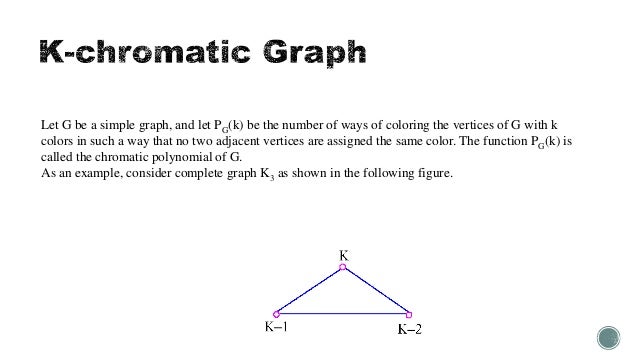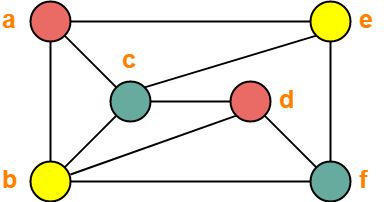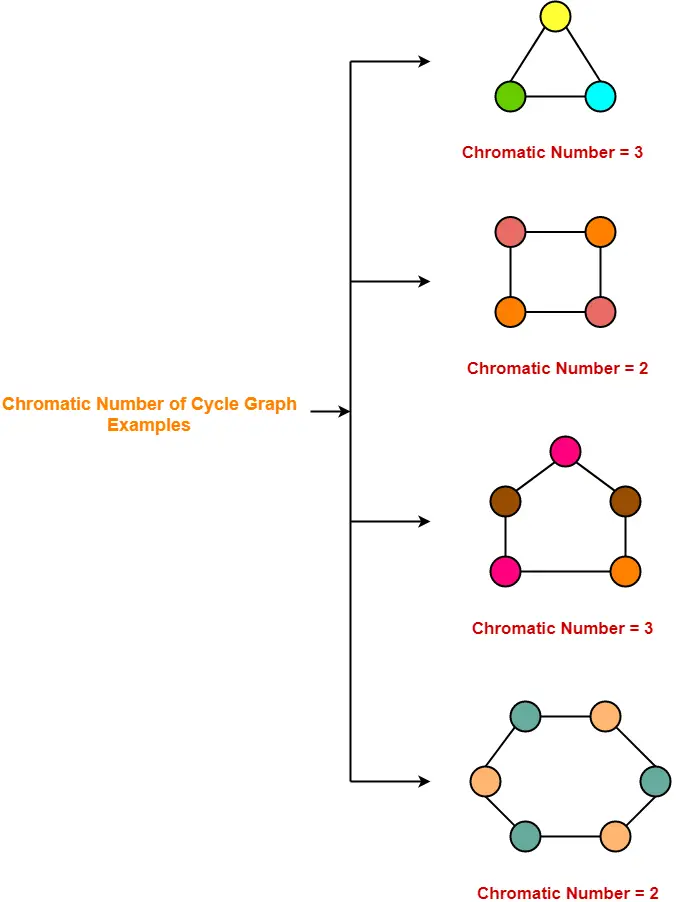Chromatic Number In Graph Coloring. The other graph coloring problems like Edge Coloring (No vertex is incident to two edges of same color) and Face Coloring (Geographical Map Coloring) can be transformed into vertex coloring. Graph Coloring is a process of assigning colors to the vertices of a graph.

In graph theory, graph coloring is a special case of graph labeling; it is an assignment of labels traditionally called "colors" to elements of a graph subject to certain constraints.
In graph theory, graph coloring is a special case of graph labeling ; it is an assignment of labels traditionally called "colors" to elements of a graph subject to certain So this is a graph coloring problem where minimum number of time slots is equal to the chromatic number of the graph.
In this video, I explain what a coloring of a graph is in graph theory. Answer: c Explanation: Chromatic number of an arbitrary graph cannot be determined by using any convenient method. I also define the chromatic number of a graph and discuss a good procedure for.




